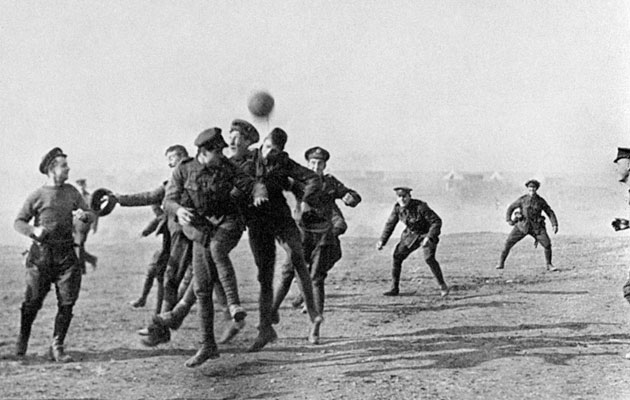
Daniel Cui was a freshman goalkeeper at a high school in Hillsborough, California. He suffered through a very difficult season where his team lost every game. And as the goalkeeper for the team, he was often blamed for the loses. After the final loss of the season, someone posted a bunch of pictures of Daniel failing to make the saves, which was a crushing blow to him. But in order to show their support for Daniel, some of his teammates posted a picture of him making a save as their profile picture on Facebook. By the next day many more of the students at the high school were making the same picture their profile picture until there were over 100 students who had either made it their own profile picture, or were tagging it, or were liking the teammate’s page.
Daniel was feeling very depressed about the cruel postings and didn’t want to go to school to be embarrassed in front of his friends. But when he saw what his teammates and fellow students had done, he, “came to school the next day like he was 10 feet tall.” And the next season, still feeling the confidence from knowing what his classmates had done, he started winning games and making great saves, until he was known as, “Daniel Cui – the beast goalkeeper.”
We are all Daniel Cui is one of the Facebook Stories that, “celebrates the connections people make on Facebook.” This story is especially relevant to me because my son Michael was a goalkeeper at his high school, and although he didn’t have the same experiences as Daniel, he did have to endure many of the same hardships that goalkeepers face on a regular basis. This story gives us a good sense of the importance of social media to today’s high schoolers and how people can come together on social media to support their friends who are dealing with personal struggles.
Assessment Traits:
- Presentation and Performance – This video story was a very well done and it was clearly made by professionals. It gave us a lot of information in a little over 3 minutes and it also had some excellent images of Daniel playing soccer. The shots of Daniel playing in goal were clearly reenactments of the actual games but they gave a good sense of him struggling in the games and then eventually becoming a much better player who was making some fantastic saves.
- Story – The story is one of the strengths of this short video. It is designed to make us feel good about the use of social media (especially Facebook) as a tool for supporting our friends. And the video accomplishes this very effectively. We not only get the voice of Daniel’s teammate telling us how they started the Facebook postings, but we also hear from Daniel about how he felt once he saw all of the postings. It is a feel good story that uses social media to create a sense of community that we can all share.
- Sense of Audience – This story is very much targeted at the users (or potential users) of Facebook in order to give them a good idea of how social media can create a sense of community. And the video is very effective at not only telling the story, but it also effectively uses a montage of images from Facebook to show how the student’s activity was spreading, or how this community came together to protect one of their own.






